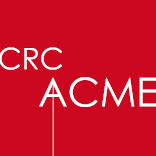–
–Typologies, Scales and Categories: Houses, Accommodations, and Residential Facilities 5 Public Buildings: Libraries and Archives 23 Public Buildings: Educational Institutions 55 Public Buildings: Museums, Galleries, Exposition Centers 73 Public Buildings: Community Spaces, Religious, and Recreational activities 89 Public Buildings: Commercial and Mixed Use 109 Public Buildings: Healthcare Services 123 Public Spaces: Cafés, Restaurants, Street cafés … Lire la suite
